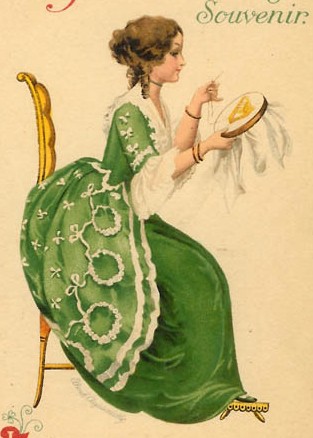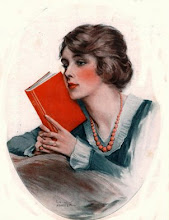
First modeled by master sculptor Reinhold Unger in 1948. Originally only one size with the 196. In the 1950's, a smaller size was issued with the number 196/0. At the same time the large size was changed to 196/l. Most models have an incised 1948 copyright date. Old name: 'The Secret'.
The beginnings of Hummel: The Goebels
In 1876, Franz Goebel started a porcelain firm near the town of Oeslauby, Germany. After several years of porcelain production in the factory, Franz's son, William expanded the Goebel product line and changed the company name to W. Goebel Porzellanfabrik. Convinced that the American market would assist sales, William developed a U.S. product line and sent his 16-year-old son, Max Louis, to America. By 1911, Max Louis Goebel returned to German to move the factory into the 20th century.
In 1876, Franz Goebel started a porcelain firm near the town of Oeslauby, Germany. After several years of porcelain production in the factory, Franz's son, William expanded the Goebel product line and changed the company name to W. Goebel Porzellanfabrik. Convinced that the American market would assist sales, William developed a U.S. product line and sent his 16-year-old son, Max Louis, to America. By 1911, Max Louis Goebel returned to German to move the factory into the 20th century.
Goebel finds Hummel
In the 1930s, Franz Goebel thought that in a world of political turmoil, customers would respond to a product that depicted the gentle innocence of childhood. The artwork of a Franciscan Sister and gifted artists trained at the Munich Academy, Maria Innocentia Hummel, was introduced to Mr. Goebel. The nun made drawings of country children that were printed as art cards which gained popularity. Based on the artwork of Sister Hummel, Goebel wanted to produce a line of figurines. The artist was contacted at the Convent of Siessen and was shown clay models based on her drawings. Sister Hummel and the Convent of Siessen granted sole rights to Goebel to create ceramic figures based on her original artwork. Sister Hummel personally approved the sculpting and painting of each porcelain piece. It was determined that earthenware, pioneered by Goebel in the 1920s, was the proper medium for the new line.
In the 1930s, Franz Goebel thought that in a world of political turmoil, customers would respond to a product that depicted the gentle innocence of childhood. The artwork of a Franciscan Sister and gifted artists trained at the Munich Academy, Maria Innocentia Hummel, was introduced to Mr. Goebel. The nun made drawings of country children that were printed as art cards which gained popularity. Based on the artwork of Sister Hummel, Goebel wanted to produce a line of figurines. The artist was contacted at the Convent of Siessen and was shown clay models based on her drawings. Sister Hummel and the Convent of Siessen granted sole rights to Goebel to create ceramic figures based on her original artwork. Sister Hummel personally approved the sculpting and painting of each porcelain piece. It was determined that earthenware, pioneered by Goebel in the 1920s, was the proper medium for the new line.



No comments:
Post a Comment